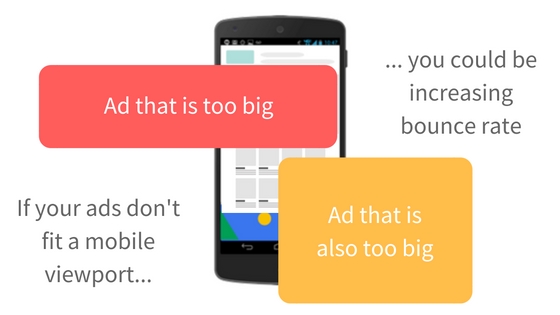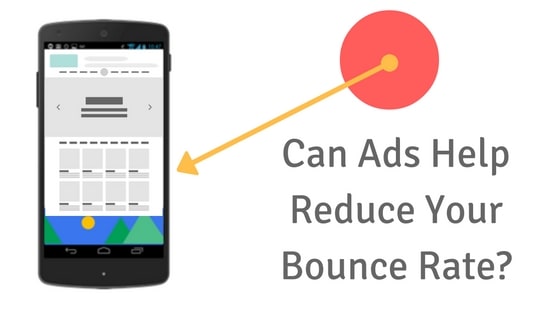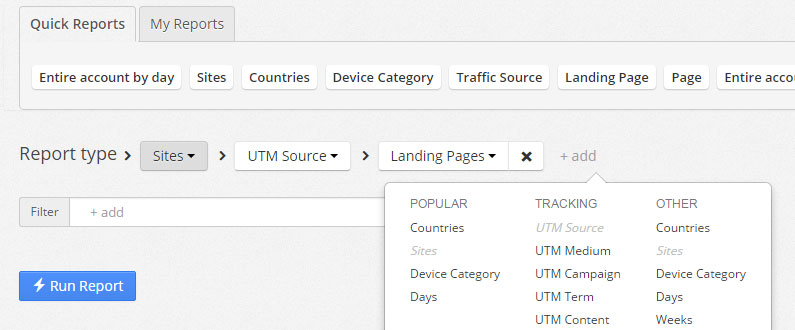Can Ads Reduce Bounce Rate?
Advertising is fundamentally important to the online ecosystem because it allows people to access free content online. If given the option to pay a monthly subscription or access to sites for free, most people would prefer free content. With that said, when advertisements are placed on a website, it can also correlate to an increased bounce rate. Logically, this makes sense because it’s another reason for visitors to exit a page. However, there are some principles — proven by science — that allow publishers to show ads and reduce bounce rate at the same time.

Below, we’ll highlight exactly what we’ve learned from studying thousands of sites, bounce rates, and ad placements that will allow you to reduce bounce rate while still displaying effective ads on your site. The secret is in the data.
The first two are things most top publishers are already doing. The last one is something that very few top publishers are doing… and we’ve seen it make a huge difference.
Don’t let ads increase bounce rate
One of the most obvious things publishers can do is ensure that all ads on the site fit in their allocated positions. This may seem like a no-brainer, but often the publisher makes the mistake of putting ads in spots that don’t fit.
If this results in visitors not being able to access content, there’s a good chance the bounce rate will go up. Ensuring that all ads fit, is one of the easiest ways to minimize an increase in bounce rate when using ads.
This is an extremely common scenario when a publisher does all of their work from a desktop computer; as they assume that everything is nice and tidy on their mobile-responsive site. This is rarely the case. The mobile version of your site should be closely monitored. If you don’t monitor your bounce rates closely, you could have one or two pages with ads taking up space in a mobile viewport that is hemorrhaging viewers by the day.
Unfortunately, this is a scenario that has happened (or is happening to most publishers). It’s always good to have the mobile version of your site in a browser when reviewing content.
Have your ads load asynchronously
Another easy way to lower bounce rate on a site is to ensure that ads load asynchronously from content. This means that when a user visits a site, the ads will load separately from the content.

Loading ads asynchronously from content is important because it will help deliver the content as fast as possible. Ads on a site come from a different server than content, so if you try and load everything synchronously, the slower ad serving could impact overall load speeds and increase the bounce rate.
By loading ads asynchronously, publishers can ensure that slow loading ads won’t impact other aspects of the website.
The one thing most publishers aren’t doing…
While the previous two suggestions are very helpful, most publishers are already doing these things to help lower bounce rate. One of the biggest things that publishers can do to impact bounce rate is account for where ads are located on the page.

Ad combinations can reduce bounce rate
There are billions of possible ad combinations on a page. You could be displaying aggressive ads — pop-ups and ads embedded in the middle of the content — or less intrusive ads, such as the sidebar and at the bottom of the page. Depending on the goals you have in mind for a site, both aggressive and conservative ad placements have pros and cons that can impact bounce rates.
Placing ads in aggressive locations can boost earnings because it forces the readers to notice them. Considering publisher’s make money from visitors seeing/clicking on ads, it’s important to put them in places that people notice. However, if the ads are so prominent that they distract visitors from absorbing the content it can impact the bounce rate in two ways.
One, it could potentially cause visitors to click on an ad, leading them away from the site. Two, it could frustrate visitors because they aren’t able to attain the content on the site. In both cases, this causes the bounce rate to go up.
Conversely, when ads are placed in less intrusive locations on a page, it’s common to see a lower bounce rate. Why? Because users aren’t going to notice them as much, meaning they’re less likely to click on ads. While visitors may favor a site with less intrusive ads, publishers also need to make money in order for the site to operate.
The banner blindness that comes from less intrusive ads can ultimately hinder publishers from maximizing earnings. Ultimately, the question is, how do publishers lower bounce rate while still making the most from their advertising?
Monetization and UX combined
The best way to do this is by continuously testing out different combinations of ad sizes and locations on each page of a site, seeing how different combinations of ads impact earnings as well as bounce rate on a site.
Understand The User Landing Page Journey
One way to do this is by understanding how your landing pages work. It’s important to dig into your content and understand how users are finding different pages and what they are doing after they hit different landing pages.
For Example: You may have one page that is more of a reference for visitors. They come, get all the info they need, and leave (only visiting one page). On another page, it may be more in-depth, leading content which encourages them to visit multiple pages to get all the info they need (increasing their pageviews on average). The monetization strategy for both of these landing pages should be different.
The reference page — that users leave quickly — might be best used when aggressively monetized (since users are leaving anyway). The other page — with multiple pageviews — may be best with a more conservative approach (since these users will be visiting multiple pages anyway). Here’s how you can dig into these pages to figure this out.
Summarizing the last point
Visitors browse every website differently, meaning that ad combinations that work on one website may be different than another website. Publishers should look at the average bounce rate for sites in their vertical, and test ad combinations to see how they impact bounce rate, as well as revenue. If revenue can be sustained or improved while the bounce rate stays the same or lower, that ad combination it’s sustainable long term.
If revenue can be sustained or improved while the bounce rate stays the same or lower, that ad combination is sustainable long term. This is what most publishers want to see.
At the end of the day. Bounce rate is a UX metric, but it dramatically affects monetization. We encourage all publishers to think of these metrics that way.


